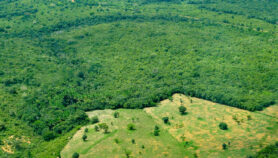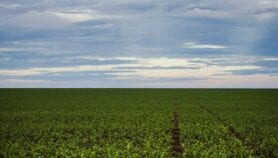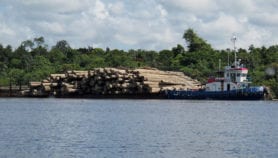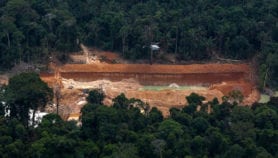23/08/23
Carbon storing forest canopies face tipping point
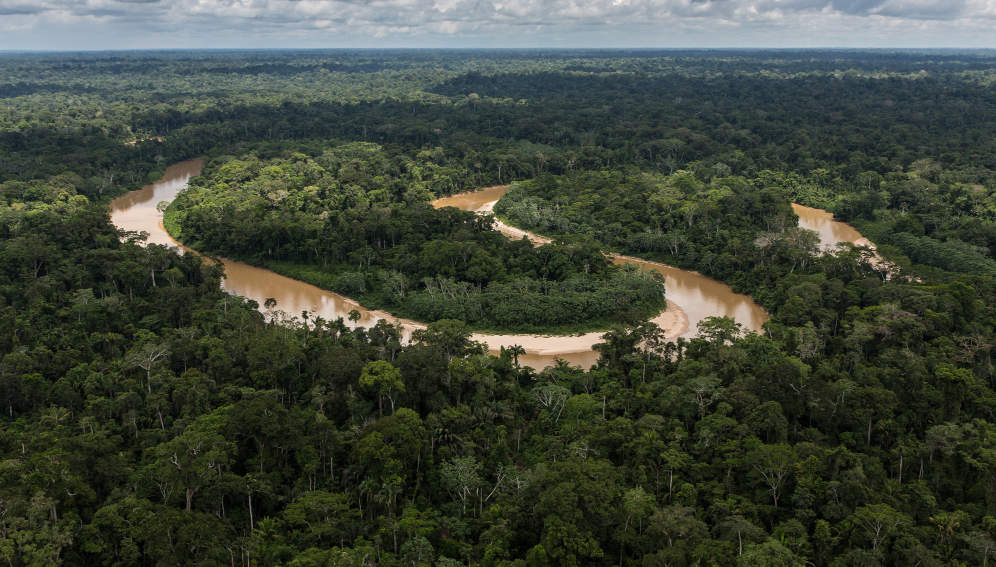
By: Claudia Caruana
Send to a friend
The details you provide on this page will not be used to send unsolicited email, and will not be sold to a 3rd party. See privacy policy.
[NEW YORK] The world’s tropical forest canopies – a crucial carbon sink helping curb global warming – may be closer to critical high-temperature thresholds than previously thought, according to new analysis.
The canopy — often more than 30 metres above the ground — consists of overlapping branches and leaves of forest trees. Scientists estimate that between 60 and 90 per cent of forest life is found there.
This dense forest layer also captures carbon dioxide from the atmosphere, acting as a so-called “carbon sink”, helping to curb global warming and its effects on vulnerable communities, particularly in the global South.
The international study, published today (23 August) in Nature, analysed data from across the world’s tropical forests.
“Our model is not fate. It suggests that with some basic climate mitigation, we can address this issue.”
Christopher Doughty, associate professor of ecoinformatics, Northern Arizona University
Researchers led by Christopher Doughty, an associate professor of ecoinformatics at Northern Arizona University, US, looked at the variation of leaf temperatures within forest canopies and how they could be impacted by climate change.
They calculated that tropical forests could reach a critical “tipping point” if air temperatures were to rise by 4 degrees Celsius.
Tropical forests, home to two thirds of the world’s biodiversity, are warming, says Doughty.
“In our research, we detail how much warming they can potentially withstand,” he tells SciDev.Net.
“This is important because it quantifies how much less carbon society should put in the atmosphere to avoid this potential collapse of tropical forests.”
The researchers found that some individual leaves in a canopy can be much hotter than the mean canopy temperature.
“A small percentage of tropical leaves are already reaching, and occasionally exceeding, the temperatures at which they can no longer function—suggesting that as climate change continues, entire canopies could die,” the study warns.
In the past, accurately measuring tropical forest leaf and canopy temperatures has been difficult and time-consuming.
International Space Station
But, by combining ground-based measurements of individual tropical leaf temperatures, leaf warming experiments from three continents, and high-resolution data from a new NASA thermal imaging instrument on board the International Space Station (ISS), the researchers built a comprehensive understanding of current tropical forest leaf temperatures.
This visualization depicts a global view of forest height data collected by the GEDI instrument aboard the International Space Station. Brown and dark green represent shorter vegetation. Bright green and white represent taller vegetation. This visualization uses data collected between April 2019 and April 2020. Height is exaggerated to depict variation at this scale.
Adapted from NASA Scientific Visualization Studio
The team were then able to model how these temperatures may be expected to change in the face of ongoing human-induced global warming.
“For the first time, this work combines all leaf temperature and warming experiment datasets from tropical forests across the planet, uses a new NASA thermal satellite, and combines this data into a model to simulate potential future climate situations,” says Doughty.
“In essence, we uniquely measure temperatures from individual leaves in all tropical forests and use this to predict the fate of tropical forests.”
The researchers used the data to estimate the proportion of leaves that may approach critical temperatures under future increases in air temperatures of 2 degrees Celsius, 3 degrees Celsius, and 4 degrees Celsius, which are various warming scenarios under climate change.
To do this, they aggregated canopy top leaf warming experiment data from Brazil, Puerto Rico, and Australia.
“We were really surprised that when we warmed leaves by just a few degrees, the highest leaf temperatures increased by 8 degrees Celsius,” says Doughty.
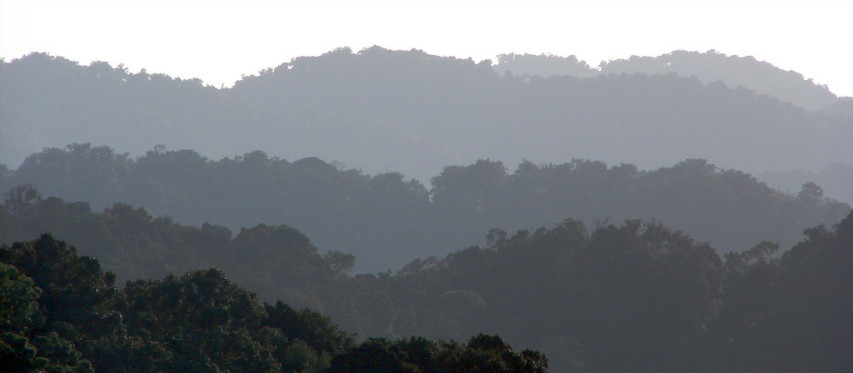


A misty, rolling forest canopy in Uganda. Past research has shown that trees are dying at an accelerated rate. Photo by Douglas Sheil/CIFOR
The study showed that more than one per cent of the leaves in the canopy warming experiments exceeded critical temperature thresholds, estimated at 46.7 degrees Celsius, at least once a year, increasing the percentage of leaves that surpass this threshold currently by two orders of magnitude, Doughty explains.
The authors also measured canopy top peak temperatures across all tropical forests in South America, Africa, and Southeast Asia using NASA’s ECOSTRESS, a thermal instrument on the ISS that measures the temperature of plants. They found that during dry, warm periods, entire canopies could exceed 40 degrees Celsius.
Amazon at greater risk
“Our model is not fate,” Doughty stresses, however.
“It suggests that with some basic climate mitigation, we can address this issue.
“Further, it helps pinpoint a few key areas that need further research, like whether tropical trees can change their upper-temperature thresholds.”
The research found that because the Amazon is already experiencing slightly higher temperatures than the Congo Basin, it is at greater risk.
Past research has shown that trees are dying at an accelerated rate in the Amazon, compared with Central Africa, suggesting that high temperatures may be partially to blame for this increased mortality.
“By avoiding high-emissions pathways and deforestation, we can protect the fate of these critical realms of carbon, water, and biodiversity,” says Doughty, adding: “This study should act as [a] wakeup call that if people do not address climate change, tropical forests could be at risk.”
David Schimel, senior research scientist at NASA’s Jet Propulsion Lab at Caltech in California, US, tells SciDev.Net the research identifies a relationship between macroclimate and microclimate.
“Often, ecologists make inferences about the likely consequences of changing climate using regional temperature trends and referencing the biology to the most readily available weather data,” he says.
“[They] use ‘downscaled’ data considering topography and elevation, sunnier and shadier slopes, but rarely do they consider the detail of variations in the vertical within a canopy, partly because, as this paper shows, this is a significant research effort.”
In contrast, says Schimel, the researchers in this study took advantage of a cutting-edge remote sensing instrument that has “unprecedented spatial resolution and accuracy” to study the energy balance within a tall canopy.
He says the research provides “some precision to our understanding of how canopies respond to heat waves and demonstrates the value of high-resolution thermal observations”.
Schimel is doubtful that the research will increase motivation for the world to avoid the high emission scenarios it is already committed to avoiding.
“The main value of this study in my mind is to highlight how tricky capturing the extremes as opposed to the slow overall trends, and their impacts will be,” he adds.
“This is undoubtedly only one of many ways in which responses differ between extremes and gradual change.”
This piece was produced by SciDev.Net’s Global desk








